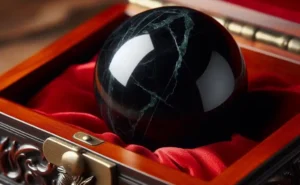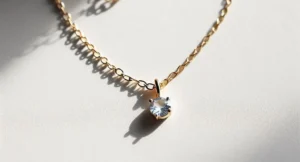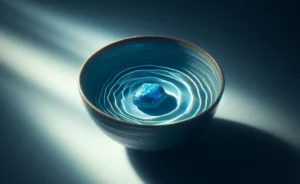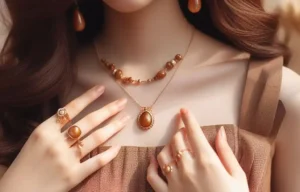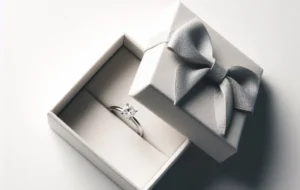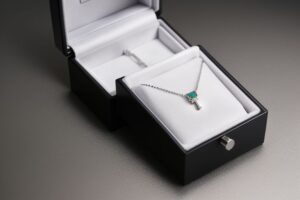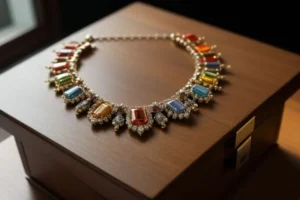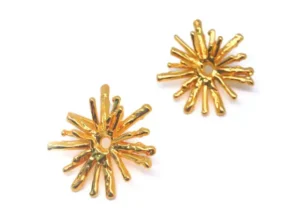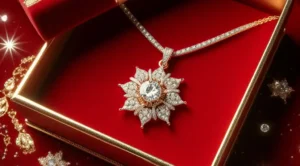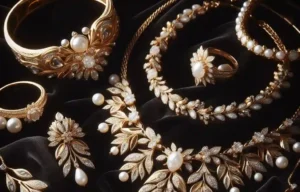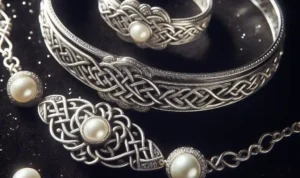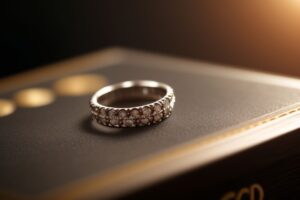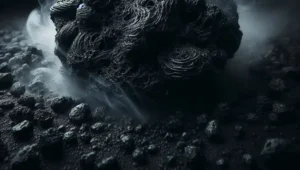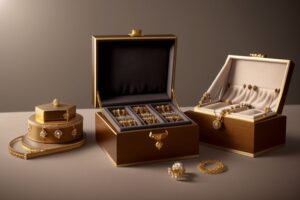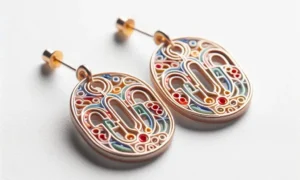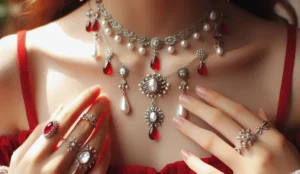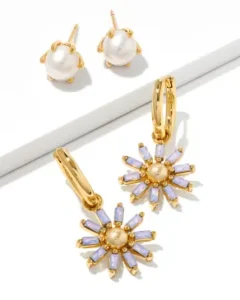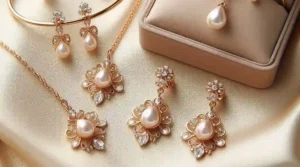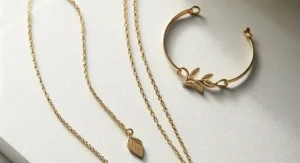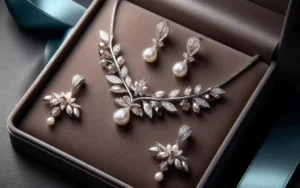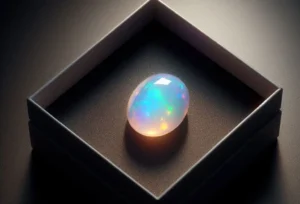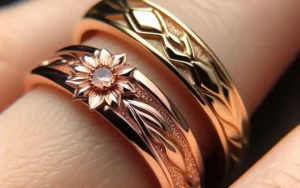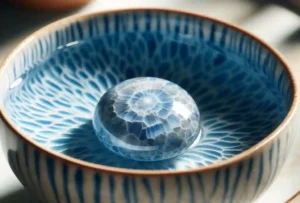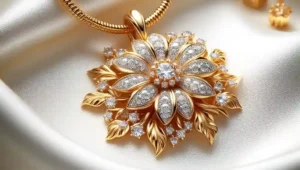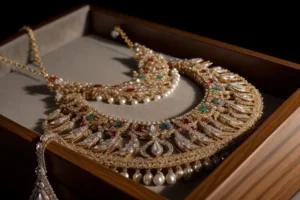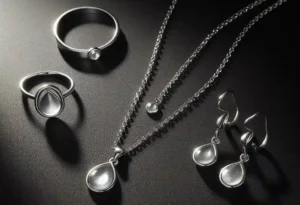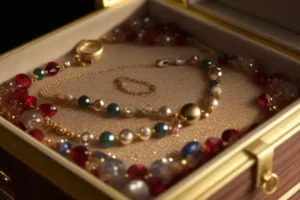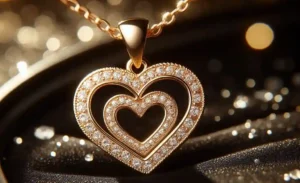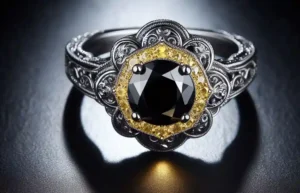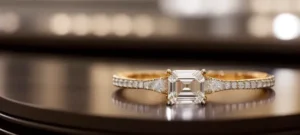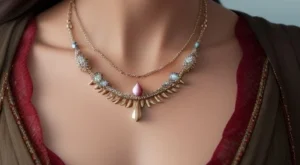What Happens If You Leave Jewelry In Cleaner Too Long: Have you ever wondered what could happen to your jewelry if you leave it in the cleaner for too long? Well, you’re about to find out in this cautionary tale about going your jewelry in the more spotless too long.
In this blog post, I will share my experience of accidentally leaving a piece of jewelry in the cleaner for too long and provide tips on avoiding making the same mistake. Read on to learn why you should always be mindful of how long your jewelry stays in the cleaner.
What is Jewelry Cleaner and How Does it Work?

Jewelry cleaner is a specially formulated solution designed to clean and restore shine to all types of jewelry. It comprises a combination of chemicals, varying depending on the brand and type of cleaner you use. Some cleaners use harsh chemicals like ammonia, while others are more gentle and use natural ingredients.
Regardless of the type of cleaner you use, the primary mechanism for how it works is the same. Jewelry cleaner works by breaking down and removing dirt, grime, and other residues that accumulate on the surface of your jewelry over time. It combines solvents, surfactants, and other cleaning agents that dissolve and remove unwanted particles.
While jewelry cleaner is generally safe and effective, it’s essential to use it properly to avoid damaging your precious jewelry. Leaving your jewelry in the cleaner for a short time is one of the most common mistakes people make. In the next section, we’ll explore the risks of doing so.
The Risks of Leaving Your Jewelry in Cleaner for Too Long

Jewelry cleaners can be a great way to keep your favorite pieces sparkling and shining. However, leaving your jewelry in the cleaner for too long can actually cause damage that may be irreversible. The chemicals in the cleaner can be harsh and abrasive. If left on your jewelry for an extended period, they can eat away at the surface and cause discoloration, dullness, or cracks.
Not only can prolong exposure to jewelry cleaner harm the metal or stones of your piece, but it can also cause damage to any delicate components, such as clasps or chains. These elements can become weakened and prone to breakage if left in contact with the cleaner for too long.
Also, suppose you have any jewelry with porous stones like pearls or opals. In that case, they are especially vulnerable to damage from cleaning solutions. These stones are sensitive and can absorb the chemicals in the cleaner, leading to discoloration and an overall dull appearance.
It is essential to always follow the instructions on your jewelry cleaner and stay within the recommended cleaning time. Leaving your jewelry in the cleaner for too long may seem like an easy way to get a deep clean. Still, the potential for damage far outweighs any benefits.
In the next section, we will explore the types of jewelry most vulnerable to damage from extended exposure to cleaners.
Types of Jewelry That Are Especially Vulnerable
While all types of jewelry risk being damaged if left in cleaner for too long, some are particularly vulnerable. Here are some of the types of jewelry you should take extra care with when cleaning:
1. Pearls are incredibly delicate and should be handled with care. Exposure to chemicals like those found in jewelry cleaners can cause them to lose their luster or even become discolored.
2. Soft Stones – Opal, turquoise, and amber are considered soft and can be easily scratched or damaged by harsh chemicals. These types of stones should be cleaned using a gentle method that doesn’t involve immersion in water or cleaner.
3. Costume Jewelry – Costume jewelry is often made from materials not meant to come into contact with harsh chemicals. Exposure to jewelry cleaner can cause the metal to discolor, the stones to dislodge, or the entire piece to fall apart.
4. Silver Jewelry – Silver is a relatively durable metal but also prone to tarnishing. Exposure to harsh chemicals like those found in jewelry cleaners can cause it to become discolored or even pitted over time.
5. Antique Jewelry – Antique jewelry often contains delicate materials and should be treated with extreme care. Exposure to harsh chemicals can damage or destroy these materials, ruining the piece’s value and historical significance.
In general, it’s a good idea to research the type of jewelry you’re cleaning to determine the best cleaning method and avoid damaging your precious pieces.
Signs Your Jewelry May Have Been Damaged
Leaving your jewelry in the cleaner for too long can lead to severe damage that can be difficult or impossible to fix. Here are some signs to watch out for if you suspect your jewelry may have been damaged by prolonged exposure to a cleaner:
1. Changes in color or finish: If your jewelry has lost its shine or appears discolored, the cleaner may have damaged it.
2. Fading or chipping: Jewelry left in cleaner for too long may experience fading or chipping of the metal or stones.
3. Cloudy appearance: If your jewelry appears cloudy or hazy, this may be a sign of damage caused by the cleaner.
4. Loose or missing stones: Stones weakened by prolonged exposure to cleaner may become loose or even fall out of their setting.
5. Changes in texture: Jewelry that has been damaged by cleaner may develop rough spots or an uneven texture, indicating that the surface has been corroded or eroded.
If you notice any of these signs, taking immediate action is essential to protect your jewelry and prevent further damage.
Steps to Take If You Suspect Damage Has Occurred
Suppose you suspect your jewelry has been damaged due to leaving it in the cleaner for too long. In that case, there are several steps that you can take to minimize the damage and prevent further harm. Here are a few steps to follow:
1. Stop using the jewelry cleaner immediately. If you notice any signs of damage or discoloration, the first step is to stop using the cleaner. Continuing to use the cleaner could cause further harm to the jewelry.
2. Assess the damage. Take a close look at your jewelry and assess the extent of the damage. Look for signs of discoloration, scratching, or any other damage.
3. Determine if the damage can be fixed. Depending on the type and extent of the damage, it may be possible to repair your jewelry. Consult with a jeweler or a professional cleaner to see if any options exist for fixing the damage.
4. Consider contacting the manufacturer. If your jewelry is still under warranty, getting it repaired or replaced may be possible by contacting the manufacturer. Be sure to check the warranty information for your jewelry to see what options are available.
5. Take preventative measures. To prevent this from happening again, follow the instructions for your jewelry cleaner carefully. Use the cleaner for the recommended time, and avoid leaving your jewelry in the solution for too long.
FAQs
Q: Can all types of jewelry be cleaned with jewelry cleaner?
A: No, not all types of jewelry are safe to clean with jewelry cleaner. Reading the label and instructions carefully before using it on your jewelry is essential.
Q: How long should I leave my jewelry in the cleaner?
A: Follow the instructions on the label carefully. Typically, it’s recommended to leave your jewelry in the cleaner for no more than 10-15 minutes.
Q: What should I do if I accidentally leave my jewelry in the cleaner for too long?
A: Check your jewelry for any signs of damage. If you notice any changes in your jewelry’s color, shine, or texture, stop using the cleaner immediately and take your jewelry to a professional for inspection.
Q: Can jewelry cleaners remove tarnish from silver jewelry?
A: Yes, jewelry cleaners can effectively remove tarnishes from silver jewelry. However, ensuring the cleanser is specifically designed for silver is essential.
Q: Can I clean my jewelry with household cleaning products?
A: No, cleaning your jewelry with household cleaning products is not recommended, as they can be too harsh and damage your jewelry.
Q: How often should I clean my jewelry?
A: It depends on how often you wear your jewelry. For jewelry that is worn daily, it’s recommended to clean it once a week. You can clean it less frequently for jewelry that is only worn occasionally.
Conclusion
While jewelry cleaner is a great tool to keep your favorite pieces looking their best, it is essential to use it properly. Leaving your jewelry in the cleaner for too long can have disastrous consequences, including damage or complete destruction of your beloved items. Certain types of jewelry are especially vulnerable to this risk, including pieces that are delicate or contain stones.
It is essential to watch for signs of damage, such as discoloration or erosion, and take immediate action if you suspect any issues. Ultimately, taking proper care of your jewelry means giving it the attention and care it deserves. By following the reasonable procedures for using jewelry cleaner, you can keep your pieces looking beautiful for years.
Also Read –
How to Clean Stainless Steel Jewelry?
How To Clean Ivory Jewelry? A Comprehensive Guide
Also Read –
How To Pack Jewelry For Moving?
How To Clean David Yurman Jewelry?
Also Read –
How to Clean Brighton Jewelry?
Does stainless steel jewelry rust?
Also Read –
How much does permanent jewelry cost?
Also Read –
Also Read –
What To Do With Broken Gold Jewelry?
How To Make Frequency Infused Jewelry?
Also Read –
How To Organize Jewelry Inventory?
Also Read –

